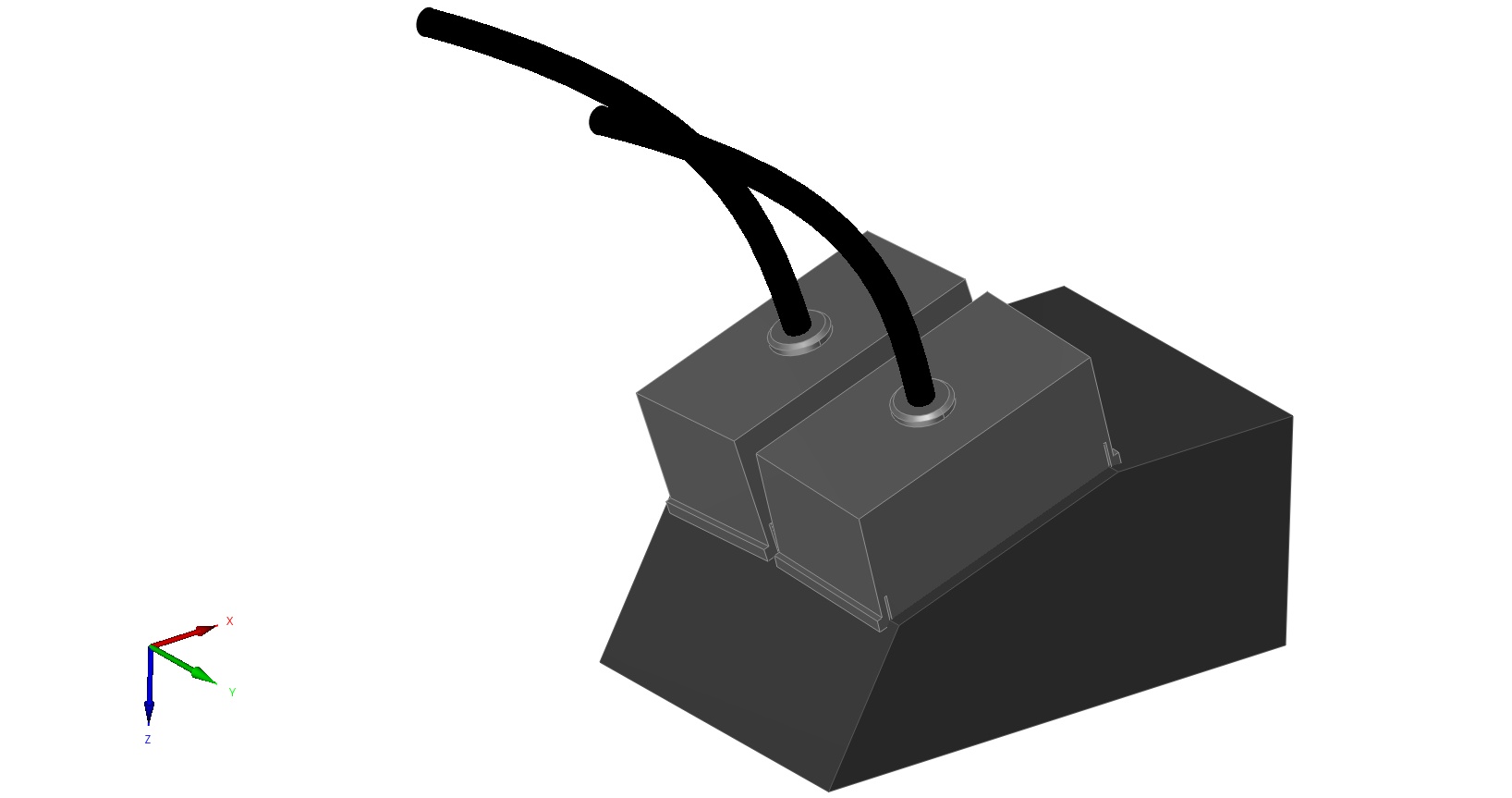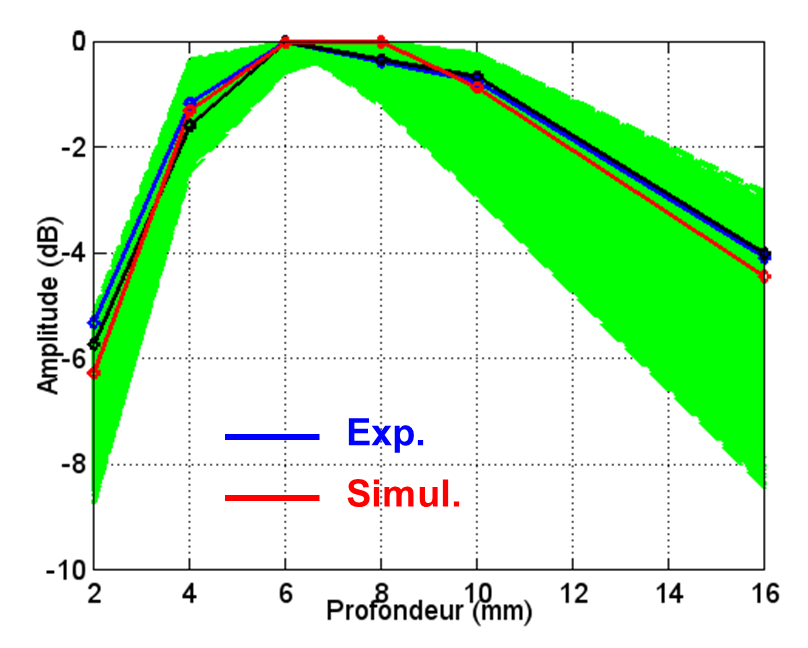 To correctly model this type of probe, you must accurately know the position and orientation of each crystal in the sensor, because these parameters are directly linked to the characteristics of the radiated acoustic beam. An error on an input parameter may cause an error on the beam focusing depth, and thus lead to unrepresentative simulated results with regards to the measurements.
To correctly model this type of probe, you must accurately know the position and orientation of each crystal in the sensor, because these parameters are directly linked to the characteristics of the radiated acoustic beam. An error on an input parameter may cause an error on the beam focusing depth, and thus lead to unrepresentative simulated results with regards to the measurements.
It is generally more difficult to access this crystal position and orientation information than for other conventional probes, because the transmitter and receiver are positioned in 3D and combine at least two angles: the angle of incidence and the roof angle. The meaning of these angles is rather clear but identifying the values to key into CIVA from the manufacturer data sheet is often complex for various reasons. First, the definition of the roof angle is not necessarily the same between various probe manufacturers and the convention chosen in CIVA. Then, the coordinate systems in which these angles are expressed may differ from one manufacturer to another, and moreover do not coincide with this of CIVA. Finally, this kind of probe is often seen as a "black box"; thus it is in practice quite complicated to find the right information in the manufacturers’ data sheets, particularly for coordinate systems in which the various parameters are given. Furthermore, the values given in the data sheets sometimes correspond to theoretical or approximate values, but not measured ones.
Like you, we have faced these difficulties many times, and we have developed tools to help in the identification of parameters and to finally identify the correct settings to enter into CIVA to realistically model these kinds of probes. These tools are based on the knowledge of a calibration curve (DAC curve) measured with the real probe. Indeed, knowing this DAC reference curve, it is possible to perform an iterative simulation study to rigorously identify parameters to be inserted into CIVA to reproduce the experimental curve, and therefore model the probe as accurately as possible. More precisely, we will simulate a multitude of DAC curves associated with various combinations of input parameters of the probe, and we will successively compare each simulated curve with the experimental reference, until a satisfactory agreement is found.
To help you benefit from our tools, we aim to perform for you the work of identifying your probe modeling parameters. We offer a service for this simulation whose price depends on the number of probes you would like to simulate. The table below shows you the prices for some cases; please contact us for more information if you need a different number of probes.
| Number of probes to be studied | ||||
| 1 | 2 | 3 | 5 | 10 |
| 2,800 € | 4,450 € | 5,990 € | 7,300 € | 12,650 € |
After completion of the work, we will provide you with a summary document describing the results achieved and a CIVA parameter file (*.xml format) for each probe studied, which you can directly load in CIVA to make your simulations. The image below illustrates the type of results that we will be able to provide, namely a graph showing the hundreds or thousands of simulated DAC curves associated with various combinations of input data, and identification of the curve leading to the best correlation compared to the experimental reference curve.


Contact us for more information, providing us with the number of probes that you would like us to study, and sending us the list of required input data for each probe. Upon receipt of your request and the associated data, we will send you a technical and commercial proposal describing the scope of delivery including the price and delivery time as soon as possible.
